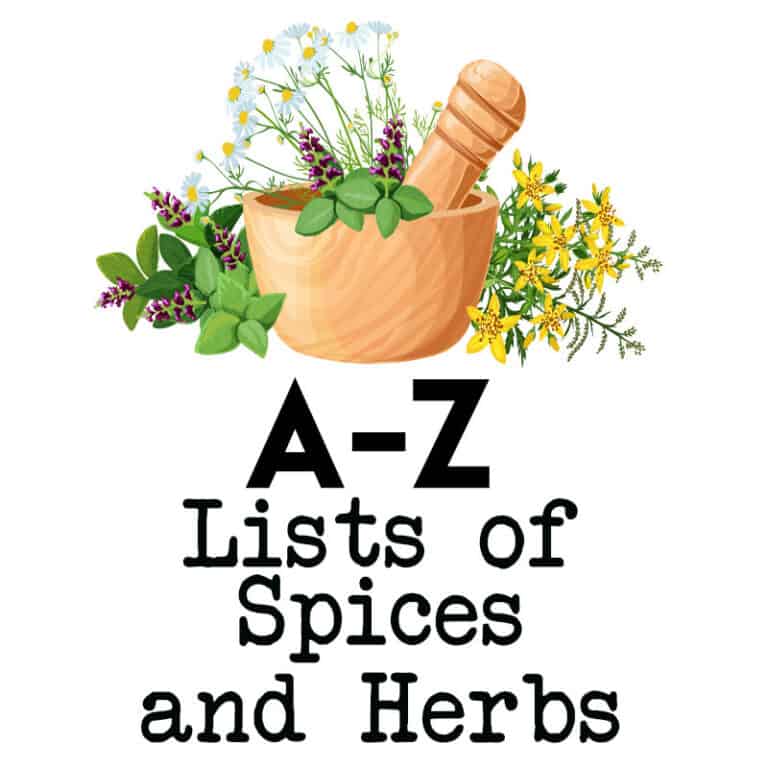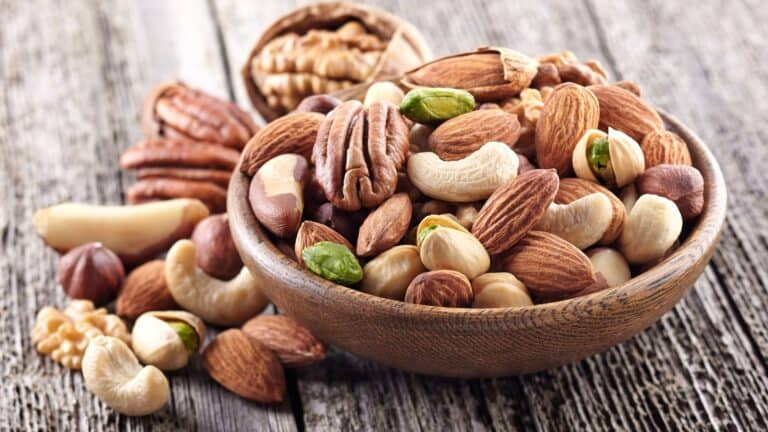5 Best Aromatic Herbs to Grow And Use In The Kitchen
This post may contain affiliate links. Please see my disclosure policy for details.
In this article, we will learn the five of the best aromatic herbs to use in cooking or grow in your garden.
Are you considering adding some fragrant herbs to your garden for that fresh-from-the-earth goodness? Or are you on the hunt for the most aromatic herbs to jazz up your dishes?
If your answer is a resounding yes, then you’re in the right spot! We’re about to dive into a rundown of the herbs with the strongest aromatics.
Did you know that the leaves of these scent-sational herbs are packed with oils, which give them their unique and delightful smells?
Each herb brings its own signature scent to the table, making them indispensable in the kitchen. In a nutshell, they’re the perfect enhancement for any herb garden and culinary repertoire. I mean imagine a Caprese salad without basil.
These aroma-rich herbs have a starring role in various global cuisines, and they’ve got quite the reputation in the medicinal world too. Win-win in my book.
So, let’s get started!

Basil
Basil is one of the finest aromatic herbs, and it’s not hard to grow at home.

Basil has a strong flavor, so it’s often used in cooking or salads. It’s popular in the Mediterranean, especially Italian cuisine, and you can use the leaves to make a delicious pesto sauce. YUM!
The fun thing about basil is that there are many varieties and each one has a slightly unique flavor and aroma. For example, lemon basil has hints of citrus notes, while Thai basil has licorice notes. Both beautiful and aromatic!
It’s good to plant basil in rich, organic soil for it to grow well. Also, it would help if you placed it where it can receive sunlight since basil likes heat. It doesn’t do well in winter, and you shouldn’t put it in a spot that is windy.
Basil also grows extremely well hydroponically. I have been growing both Genovese and Thai basil in my Aerograden.
Quick Ways To Enjoy the Aroma and Flavor of Basil
- Chop up and place some leave in your salad
- Instead of lettuce in your sandwich, add basil leaves.
- Change up a mojito by swapping the mint with basil.
- Large basil leaves can be used with cut flowers, adding beauty and fragrance to a bouquet.
- If you have a ton of basil from your garden, it’s an easy herb to dry or freeze.
Mint
Mint is an aromatic herb with a fresh, cool, fragrant smell. Great in teas and infused water.

When the thought of aromatic herbs comes to mind, almost everyone thinks of mint! And for good reason: mint is strong both in flavor and scent.
There are many varieties of mint, like peppermint, chocolate, spearmint, orange, apple, banana, etc. And yes, I said banana!
Moreover, you can use mint to make herbal teas, salads, and sauces across different cuisines and dishes.
Mint is perennial, meaning it will stay longer in your garden by coming back every year.
However, it’s invasive, and its growth can get out of control fast. As a result, grow it directly in soil or its own garden pot. Mint needs moist soil and sufficient sunlight. But it can burn quickly when it’s too hot.
Quick Ways To Enjoy the Aroma and Flavor of Mint
- Adding mint and lemon to the water creates a refreshing and crisp beverage.
- Wow, your family by adding mint leaves to an ice tray with water. It’s a great way to serve iced tea. Yup, you just made mint ice cubes!
- Dip mint leaves into melted chocolate and let them harden.
- Drop a few fresh or dried mint leaves in a mug of warm water. This makes a light tea that is fragrant and soothing.
- Swap out half of the basil in pesto with mint.
Chervil
Chervil has an anise-like aroma, and it’s an essential ingredient in making French herb blends.

Chervil is a popular herb for making salads, and it pairs well with white wine dressings. It’s also an essential ingredient of Bearnaise sauce, a French sauce made with egg yolks and tarragon or chervil.
Furthermore, chervil goes well with potatoes, fish, butter sauces, elephant soup, eggs, and steamed vegetables like carrots.
Many have compared Chervil to a combination of parsley and tarragon with a hint of mint. It also has a beautiful light aroma of licorice, which plays well with many dishes.
Important note about chervil: For you to truly enjoy the flavor and aroma of chervil, it must be eaten fresh. Cooking or drying this herb causes it to lose most of its flavor.
You can grow chervil in deep bottom pots at your home and place them as a decoration around the house. Chervil grows well with moderate light and cool temperatures of around 60-70°Fahrenheit.
Quick Ways To Enjoy the Aroma and Flavor of Chervil
- Chervil is widely known to be used in a French omelet. So, next time you make eggs, try adding some chervil.
- You can boil some water up and enjoy a hot cup of Chervil tea. This tea has been used in folk medicine for centuries. (source)
Parsley
Parsley is a herb that tastes bitter and has a fresh, herbal fragrance.

It’s famous for adding color and flavor to soups, salads, or green sauces like chimichurri. It’s an essential ingredient in tabbouleh salad and pesto. Parsley works great as stuffing for fish, chicken, and various vegetarian dishes.
If you want to go with the most aromatic parsley, then pick Italian flat-leaf parsley vs curly parsley. Curly parsley has a subtle flavor and aroma compared to the flat-leaf version.
Parsley is robust and a biennial herb, meaning that it grows one season, then blooms, leaves seeds, and dies in another season. One year I do not know how, but my Italian parsley survived a freak snowstorm.
It grows well in rich soil that’s moist, and it needs sunlight, with partial shade. You should plant them in spring and early summer for successful growth and let them bloom through the summer and winter.
If you are planting them by seed, they take a little longer to germinate than other herbs like basil and dill. I had some parsley seeds that took 18 days to sprout. I almost gave up on them!
Quick Ways To Enjoy the Aroma and Flavor of Parsley
- Parsley is a wonderful addition to any soup or stew. It tends to mesh very well with other herbs and spices.
- Grab a bunch of parsley and make some gremolata (A topping or garnish made of finely chopped parsley, garlic, and lemon peel.)
- We are all familiar with mint water, but swapping mint out with parsley is wonderful. Especially when it’s added with citrus like lemon and orange.
- Because of its high chlorophyll content, chewing on a couple springs of parsley can freshen your breath.
Rosemary
Rosemary has a strong aromatic scent with hints of sage, balsamic, and pepper.

Rosemary is usually one of those aromatic herbs you know someone has been cooking with, because you can smell it from across the room.
It doesn’t lose its taste during cooking; thus, you can add it to stews and soups at the start. Similarly, it adds more flavor to roasted chicken, lamb, pork, olive oil, baked breads and potatoes. It’s also a great addition to cream, tomato sauces and is a popular garnish for pasta.
It’s smart to add rosemary little by little as it is strong in aroma and flavor. It also drowns out other subtle herbs.
Rosemary grows well in drained soil and can grow in cooler temperatures around 40-65° Fahrenheit in winter, but it needs good sunlight. It’s drought and pest resistant.
Also, it can grow in dry, hot, and sunny places in the summer. Likewise, the purple flowers that bloom on rosemary will add a nice splash of color to your herb garden.
Quick Ways To Enjoy the Aroma and Flavor of Rosemary
- Add rosemary to your favorite olive oil or soften butter. It will take your salad and bread rolls to the next level.
- Because rosemary is such a sturdy herb, it can be added to even honey.
- Use rosemary in a simmer pot: add a citrus like orange or lemon, rosemary, thyme, and vanilla. In no time, your house will smell amazing.
More Aromatic Herbs
In this article, I share just 5 aromatic herbs, but this doesn’t mean that other herbs are not aromatic. Most of them are wonderfully fragrant.
Here is a list of several more for you to consider adding into your cooking and herb garden.
For a citrus aroma, try these herbs:
- Lemon Verbana
- Lemon Balm
- Lemongrass
- French Sorrel
For a licorice aroma, try these herbs:
- Fennel: bulb, fronds, and seed
- Caraway
- Thai Basil
- Tarragon
For a pungent aroma, try these herbs:
- Garlic and Garlic Scapes
- Onions
- Oregano
- Garlic mustard
Final Thoughts – Get Aromatic
Different herbs like basil, parsley, mint, chervil, and many more are aromatic herbs. You can learn more about herbs and spices on my A-Z list of Herbs.
Growing an aromatic herb can be challenging if you don’t take care of each herb’s growing seasons and conditions. To suit your growing zone, you need to choose the herbs capable of growing indoors or in a small herb garden.
I personally LOVE growing herbs indoor either in my hydroponic systems or in my sunroom.
No matter what herb you decide to grow remember you can use these aromatic herbs for dishes like different salads, sauces, or get creative and blend them into a pesto!






